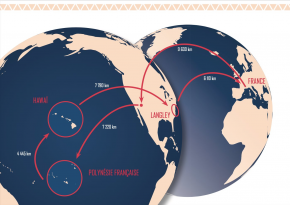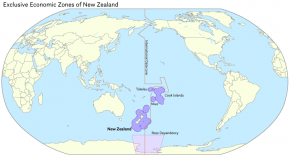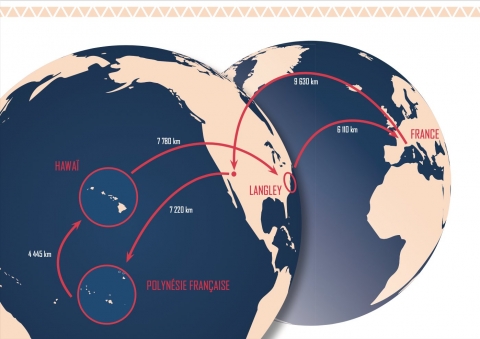Reply #1: Could it not be technically feasible for any nation that possesses air-air-refueling capabilities to strike NZ (or Australia), even symbolically?
No. Not really.
3 unarmed fighter jets, loaded with drop tanks, which required 3 refuelling tankers to get them there, and they had three stops in the US. It was perhaps the ability to show they could transport unarmed fighters into the region, but a realistic strike based remotely, it was not.

Operation HEIFARA WAKEA 2021 From 20 to 26 June 2021, the Armée de l'Air et de l'Espace (AAE, French Air and Space Force) will carry out a power projection mission, called HEIFARA,...

www.scramble.nl
The US was critical to the possibility of this. Which is fine for the French, they weren't intending to perform a type of mission without US support, or even realistically remotely strike at french Polynesia to take it back. The French also have a carrier, but I have to say, it is rare to see it operating in the Pacific near New Zealand. They have one carrier, and moving it to NZ EEZ, would mean all the other French realms would not have access to the carrier.
It also demonstrates the issue about an NZ fighter squadron trying to deploy ~15,000 km away. It would require 3 tankers to move 3 fighters, even with allied support. To move 20, they will require
10 x A330 based refuelers. A high risk movement too, a broken probe, a health issue with a pilot, a technical problem with any of the planes over open water, not a lot of good options.
Doing it in peace time is very different from trying to do it in combat.
1. I do agree additional capabilities as you describe above would be the higher priority, if it was a funding choice of either those, or an ACF only. Also add in a long-range maritime UAV capability as this has already been signalled and provisioned for (DCP19) from around 2030.
Long range UAV's would be definitely something NZ could look into and would have a useful range. But as mentioned the time frame seems to be into the future and far away.
2. All I would add to the above is the B757 Strategic airlifter replacement. If it were to something like the (more expensive) KC-30A MRTT then that covers strategic airlift, a new AAR capability (to support the P8 & C-130J's if fitted to receive fuel), VIP, Antarctic operations without PSR point of safe return issues, regional allied interoperability and seamless integration etc.
KC-30 would be a good fit, and can refuel P8's/C130. However, getting money for that would be interesting. A330/A340 have flown to Antarctica. Not sure about NZ infrastructure for that kind of operation. But certainly possible. Getting one would make a stronger argument for having a larger P8 fleet. I guess the question comes down to priorities for NZ.
3. But fingers crossed the defence policy review/follow on reviews recognises and supports NZDF needing two strategic airlift types, type 1 - as above, type 2 - aircraft with rear ramp (A400M/C-2 etc). Because one type cannot cover both needs (as I suggest this is why Treasury wouldn't support NZDF's C-17 acquisition back in 2014 - the funding wouldn't cover both types and operating only one type showed up policy failures).
IMO NZ was mad for not getting in on the C17 and will represent the fish that got away. Operational costs a good for that aircraft type and it is good at both long range and rear ramp.
Everyone can always use more Helos. MH60R IMO would be more useful than N90's. Again, land vs Navy requirement. What is going to be realistically useful in the next 10 years? But certainly see what happens with Australia's Nh90's. But its going to be fun to try and support that orphan type at high tempo, particularly for Naval purposes. MH60R with NSM would make for significant naval strike capability from a Ship.
But as we can see, it is easy to see many areas that NZ could easily pour money into and see real and significant improvement in capability, without having to go to fixed wing fighter aviation. Even in the realm of aviation. Even in the areas that fixed wing aviation would make contributions to. Its just short ranged, and hugely expensive, both to buy, to fly, to upgrade and to arm. Even a small force based out of Butterworth would be crippling to the NZ budget.
If NZ's status with the US or more importantly, AU changes, perhaps, otherwise then its not a concern. The RAAF is arguably the best funded of the 3 services, and has over 100 front line fighters which may grow to be ~130+ temporarily if a 4th F-35 squad is acquired. The US is basing B-52's and perhaps B21's up north, and air defence destroyers are based in Sydney. Its not like Australia has been neglecting its air force. Christ, its better than most of NATO currently operating the largest non-US F-35 force. Its arguably done that at opportunity cost to its Army and Navy.
NZ can enforce its EEZ with the P8 and C-130, and other non-fighter aircraft.



